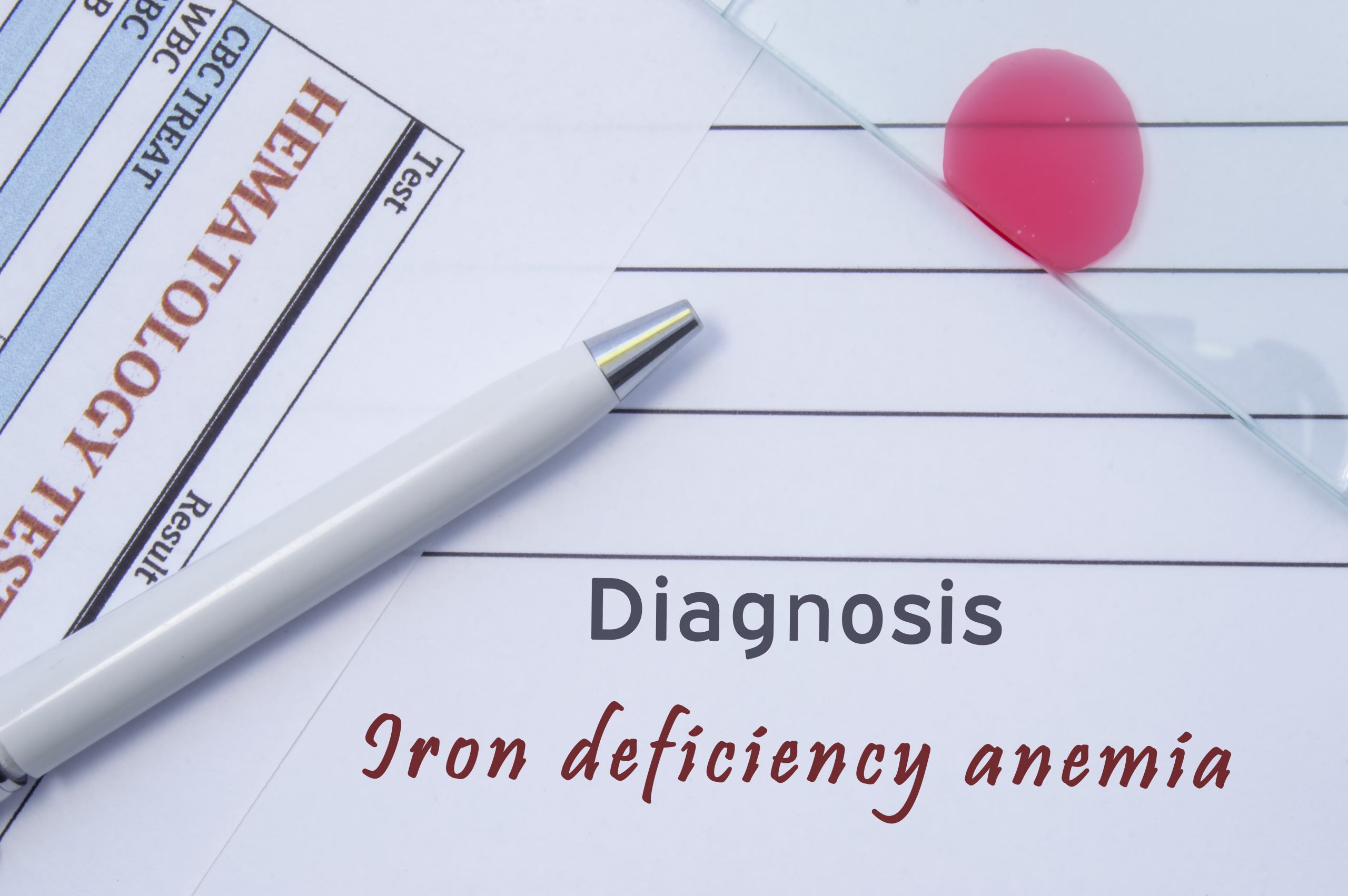
Modern Medicine Neglects the Basics
By Alan R. Gaby, M.D.

A couple of years ago, an elderly family member was hospitalized because of heart failure. After he was discharged, I saw a printout of the lab tests that had been done during his hospital stay. Although he was not anemic, his serum-iron concentration was below normal. The cardiologist apparently did not consider the low iron level to be important since no further tests of iron status were ordered and the possibility of iron deficiency was not mentioned in the discharge summary.
While a low serum-iron level by itself is not diagnostic of iron deficiency, I was concerned that a potentially significant factor was being overlooked. As with many other patients with heart failure, my family member had several risk factors for iron deficiency. First, he avoided red meat because of its potential adverse effects on the cardiovascular system. Second, his diet was high in fiber, and fiber is known to inhibit iron absorption. Third, patients with heart failure often have bowel-wall edema (secondary to the backup of fluid from the heart), which can impair nutrient absorption. Fourth, gastric acid plays a key role in iron absorption, and he was on long-term acid-suppressive medication (a proton pump inhibitor).
Research conducted over the past decade has shown that the prevalence of iron deficiency in heart-failure patients is as high as 50%. Moreover, iron deficiency, even in the absence of anemia, is a strong and independent predictor of mortality in these patients. In randomized controlled trials, correction of iron deficiency significantly improved functional capacity, symptoms, and quality of life; significantly decreased the number of hospitalizations for worsening heart failure; and non-significantly reduced mortality.[1]
A meta-analysis of four randomized controlled trials found that in heart failure patients with iron deficiency, compared with placebo, intravenous administration of iron resulted in a 47% reduction in the composite endpoint of heart failure hospitalizations and cardiovascular mortality (p = 0.01).[2] These benefits are apparently related to the fact that iron is a component of cytochromes in the electron-transport chain, and therefore plays a key role in mitochondrial energy production.
I asked the cardiologist if he would order more definitive tests for iron deficiency when my family member came to the office for his follow-up visit. Surprisingly, the cardiologist stated that he did not know which lab tests to order, and that testing for iron deficiency is the job of the patient’s internist. I contacted the internist, who agreed to measure serum iron, total iron-binding capacity, and ferritin. These tests demonstrated severe iron deficiency, and iron supplementation resulted in clinical improvement.
I was rather surprised that a heart specialist did not feel well versed in an area so fundamental to the practice of medicine – assessing iron status. Particularly since it had been seven years since a landmark study in the New England Journal of Medicine demonstrated the importance of identifying and treating iron deficiency in patients with heart failure.1 Recently, I learned that this “non-well-versedness” regarding iron deficiency was not unique to this particular doctor, but is endemic among doctors that treat heart failure. A retrospective study was conducted on 10,631 patients in a large urban healthcare system in Philadelphia who had been hospitalized for heart failure between April 1, 2016 and April 1, 2017. Adequate tests of iron status were conducted during hospitalization in only 158 patients (1.5%, or 1 of every 67 patients). Of those 158 patients, 109 (69%) had iron deficiency as defined by the American Heart Association/American College of Cardiology guidelines.[3] Of the 109 patients diagnosed with iron deficiency, only 23 (21.1%) received intravenous iron, which is considered the standard of care for the treatment of iron deficiency in heart failure patients. Of the iron-deficient patients who did not receive intravenous iron, only 19.8% were prescribed oral iron upon hospital discharge. The authors of this study concluded that iron deficiency, despite having major implications in heart failure, is not being adequately evaluated or treated during hospitalization for heart failure.[4]
As noted previously, identifying and treating iron deficiency resulted in a 47% reduction in the composite endpoint of heart failure hospitalizations and cardiovascular mortality. It is uncommon for a single intervention to have such a large effect size. The fact that this relatively simple, safe, and inexpensive treatment is largely being overlooked represents a system failure in modern medicine. As medical care continues to become more complicated and more specialized, we must remember not to forget the basics.
[1] Anker SD, et al., “Ferric carboxymaltose in patients with heart failure and iron deficiency,” N Engl J Med. 2009;361, pp. 2436-2448; Filippatos G, et al., “Intravenous ferric carboxymaltose in iron-deficient chronic heart failure patients with and without anaemia: a subanalysis of the FAIR-HF trial,” Eur J Heart Fail, 2013;15, pp.1267-1276; Ponikowski P, et al., “Beneficial effects of long-term intravenous iron therapy with ferric carboxymaltose in patients with symptomatic heart failure and iron deficiency,” Eur Heart J, 2015;36, pp. 657-668.
[2] Anker SD, et al., “Effects of ferric carboxymaltose on hospitalisations and mortality rates in iron-deficient heart failure patients: an individual patient data meta-analysis,” Eur J Heart Fail, 2018;20, pp. 125-133.
[3] The American Heart Association/American College of Cardiology guidelines define iron deficiency as a serum ferritin level below 100 ng/ml or a ferritin level of 100-300 ng/ml in combination with a transferrin saturation of less than 20%. These cutoff levels for ferritin are well above those used to diagnose iron deficiency in healthy individuals. The higher values take into account the fact that heart failure is associated with chronic inflammation, and that serum ferritin levels rise in response to inflammation.
[4] Mistry R, et al., “Iron deficiency in heart failure, an underdiagnosed and undertreated condition during hospitalization,” Ann Hematol, 2019;98, pp. 2293-2297.
Reprinted with permission from the Townsend Letter for Doctors and Patients.
______________________________
Dr. Alan R. Gaby is a former member of the NHF Board of Governors and an internationally recognized authority on nutritional therapies. He is the author of the textbook, Nutritional Medicine. Learn more by visiting http://doctorgaby.com/.

Leave a Reply